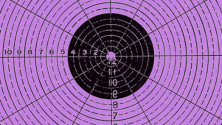A case now before the Supreme Court could lower the threat level created by bad patents in a meaningful way. The issue before the Court is whether to change the burden of proof on patent invalidity from clear-and-convincing evidence to the preponderance standard. This change would be good for free and open source software.
Today Red Hat joined in an amicus brief in support of this change in Microsoft Corp. v. i4i Limited Partnership. [PDF] On the amicus brief, Red Hat is part of a diverse group that includes Google, Verizon, Consumber Electronics Association, Comcast, Dell, Hewlett-Packard, HTC, Intuit, L-3 Communications, LinkedIn, Lockheed Martin, Mastercard, The New York Times, Rackspace, Shutterfly, Software & Information Industry Association, Time Warner, Wal-Mart, and Zynga.
When companies with such different models, philosophies, and experiences can get together, it suggests that a lot of people recognize that there's a serious problem that must be addressed.
The amicus brief faces up to some of the serious problems in the current U.S. patent system and explains them in a helpful way. At present, a party challenging a patent as invalid must show by clear and convincing evidence that the patent should never have been granted. This is the heaviest evidentiary burden applied in civil cases, and it applies only in a few legal situations. Most of the time, the applicable burden of proof is a preponderance of the evidence, meaning that a fact is found to be more likely than not. Applying the clear-and-convincing standard suggests a background assumption that there has been careful consideration of the merits of a patent application before a patent is granted.
In fact, though, this assumption is unfounded. A patent application is assigned to be reviewed by a single patent examiner. All examiners have enormous workloads. They are required to complete the processing of each application (that is, understand the application, search for prior art, communicate with the applicant, and write up conclusions) in a matter of just eighteen hours or so. The time constraints make it almost impossible to discover all applicable prior art, particularly in the software area, where much of the prior art is embodied in code for which there is no practical search method.
Because of crushing workloads and structural factors, it isn't surprising that a lot of software patents have been issued by the Patent Office that should have been rejected. But the situation is made even worse by the requirement that the patent issue unless the examiner is able to present a prima facie case of unpatentability. In other words, there's something close to a presumption that a patent application should be granted.
Once a patent is inappropriately granted, it is possible, in theory, for a party accused of infringing it to show that it is invalid. In practice, this is quite difficult. When software patents are at issue, the technical issues are often complicated and difficult for a lay jury to understand. Jurors frequently mistakenly assume that the patent examination process was careful and exhaustive, and so have a tendency to assume that a patent must be valid. On top of all this potential confusion, jurors are instructed under current rules that they may only invalidate a patent if they find the evidence for invalidity clear and convincing. Even when there's strong evidence that a patent should never have been granted, it's difficult for lay juries to conclude that the technical issues are clear.
The clear-and-convincing standard protects bad patents. As the amicus brief says, bad patents "do not foster innovation. Instead, they block and impair others from innovating. . . . If the holder of an invalid patent secures – or even threatens to secure – an injunction or royalties, it can block or tax innovation, driving up prices and decreasing the availability of innovative products and services to the public."
If the Supreme Court decides that the preponderance standard, rather than the clear-and-convincing standard, should apply, it will be much more likely that juries will invalidate bad patents. Knowing that, patent aggressors may be less aggressive. The threat to innovation generally and FOSS development in particular should be reduced. Compared to where we are now, this would be a real improvement.







25 Comments